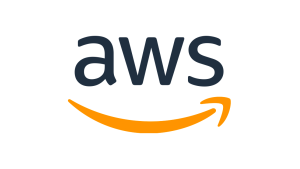
The cloud’s benefits over traditional server-based infrastructures and computing capabilities are innumerable. But cloud technology often falls short in one key realm. Traditional observability tools don’t work well—if at all—in serverless cloud configurations. This means that cloud native observability is an essential component of every open-source cloud-computing implementation—whether based on AWS, Microsoft Azure, or Google Cloud Platform.
We are passionate about helping you with cloud computing here at New Relic. That’s why we are a platinum member of the Cloud Native Computing Foundation (CNCF). CNCF is part of the Linux Foundation and promotes the collaborative development of open source cloud native computing. New Relic standardizes on CNCF’s OpenTelemetry project and contributed Pixie as an open source project to CNCF.
New Relic works with CNCF to develop and maintain open source cloud native tools that are user-friendly and allow you to adopt the cloud. Observability is a vital component of cloud computing success, and we want to make sure you have all the tools you need to succeed.
This blog post covers:
- What cloud native observability is
- Why cloud-based computing needs to be paired with cloud native observability
- Which open source cloud native observability tools might be right for you
Cloud native observability is integral to cloud computing—and something we avidly promote.
Observability vs. cloud native observability
Let’s begin by defining traditional “observability.” Cloud-based observability is different from traditional observability, but the core concept remains the same.
In simple terms, observability is your ability to deduce the status of a complex system based on the system’s outputs. Observability in computing depends on the ability to log, monitor, and trace different servers, application processes, data processes, and hardware processes.
Pre-cloud observability
Most pre-cloud observability tools were designed back when infrastructure hardware was discrete. You had a server—or maybe even 100 servers—running specific operating systems and software.
The nature of this server infrastructure allowed installing select observability tools to log changes, monitor data flows, and trace interactions in architecture. Developers used the tools to identify software inefficiencies, hardware taxation, and server demand. Often many different observability tools were used on different servers and for different purposes. Such observability apps were customizable and worked quite well—at the time.
Cloud technology is not discrete, however. It is downright anarchic by comparison. Apps and processes exist in one millisecond and are erased the next. Virtual servers are created and wiped out at a fast pace. Massive amounts of data are processed and dispersed across multiple containers hosted on fleeting servers scattered around the world.
The cloud native observability difference
If you can’t monitor your servers, containers, and data in the cloud, you can’t analyze and fix problems at the speed you need. Given the complexity of cloud infrastructure and the sheer amount of data processed, observability is more important than ever. That's why a paradigm shift in thinking about how observability works was needed. Cloud native observability is full stack.
Traditional observability tools are like 10,000-foot aerial photographs providing an exquisite, detailed view of a particular place. You can use them to see what is happening in the land of Linux Server or in the town of PostgreSQL. Cloud native observability tools are comparatively a ring of interconnected surveillance satellites. They allow you to view everything, everywhere, at once. Even servers (lands) and databases (towns) that only existed for a brief instant can be recalled and analyzed.
Cloud native observability is the all-powerful authority. It’s a digital panopticon, allowing you to freeze and zoom in on past, current, and with the use of AI, potential future events.
Why is cloud native observability important in cloud computing?
Cloud native observability provides continuous and real-time access to data, allowing you to identify potential issues before they cause any major problems. This means that you can proactively address issues and prevent downtime, rather than reacting after an incident has already occurred.
The holistic approach of cloud native observability ensures that no detail goes unnoticed. Every aspect of your system, from internal processes to hardware and software performance, is captured and made available for analysis. This comprehensive view enables you to understand the root causes of any issues and make informed decisions on improving your systems.
What cloud native observability can do for you
Cloud native observability doesn’t just mimic what logging, tracing, and monitoring apps did before the cloud. It’s more like observability on steroids. Here are three reasons your cloud infrastructure demands cloud native observability:
- DevOps acceleration: Cloud native observability frequently makes DevOps more efficient. Using automated observability allows you to find and correct errors holistically. It allows you to identify and rectify issues occurring between different projects and containers before they happen.
- AI and automated detection: Artificial intelligence (AI) and automation allow your teams to identify issues that software engineers might otherwise miss. Integrating AI into your cloud native logging and monitoring tools means that you learn about potential problems before they occur.
- Real-time and constant data availability: A digital panopticon works—as long as you can handle all of the data. The holistic approach of cloud native observability means nothing is missed. Every internal machination is recallable and analyzable, helping you determine what led to particular hardware and software outcomes.
Storing all of this data onsite can get quite expensive. This is one reason pre-cloud observability tools sampled data when doing analysis. Fortunately, data stored in the cloud is much more affordable, allowing you to store more data.
Fundamental open-source, cloud native observability tools
CNCF and its partners, including New Relic, work on open-source cloud software projects to be shared with the masses. New Relic provides an open platform where you can integrate data from widely used open-source solutions:
- Prometheus offers basic capabilities for querying, visualizing, storing, alerting, integrating, and modeling big data sets. It is considered logging software.
- FluentD is currently used by more than 5000 companies around the world—including Microsoft and Amazon Web Services. FluentD is open-source monitoring software.
- Jaeger is an open-source software platform that provides end-to-end tracing for complex distributed systems.
- Pixie is a Kubernetes-native, in-cluster observability platform that enables you to instantly troubleshoot your cloud native applications without instrumentation.
New Relic integrates telemetry data from these tools and more into one comprehensive package. Our software has a streamlined interface, making it easy to use observability in your applications.
Cloud native observability and DevSecOps
Your responsibility doesn’t end once you settle on cloud native observability tools. Automated DevSecOps is crucial for keeping nefarious actors from meddling with your cloud computing. Security cannot be overlooked. Hackers already pose real threats to cloud infrastructure and have been known to use observability exploits. Make sure to update your open-source observability software regularly.
Cloud native observability is your problem solver
Cloud native observability is crucial for every cloud-based project, including yours. Ideally, you settle on an observability solution early on when setting up a new cloud service. But it’s never too late to find the right solution.
New Relic offers you a free, full-stack means to monitor, log, and trace your cloud projects in real time, holistically. It integrates artificial intelligence to help you forestall project issues before they even have a chance to happen. It does all of this in a modern, intuitive interface.
Étapes suivantes
- To learn about the vendor-neutral home for open-source projects like Kubernetes, Prometheus, and Pixie, see the CNCF website.
- To learn more about Pixie, see pixielabs.ai.
- For an open platform where you can integrate data from widely used open-source solutions, download and start using New Relic for free.
Les opinions exprimées sur ce blog sont celles de l'auteur et ne reflètent pas nécessairement celles de New Relic. Toutes les solutions proposées par l'auteur sont spécifiques à l'environnement et ne font pas partie des solutions commerciales ou du support proposés par New Relic. Veuillez nous rejoindre exclusivement sur l'Explorers Hub (discuss.newrelic.com) pour toute question et assistance concernant cet article de blog. Ce blog peut contenir des liens vers du contenu de sites tiers. En fournissant de tels liens, New Relic n'adopte, ne garantit, n'approuve ou n'approuve pas les informations, vues ou produits disponibles sur ces sites.





